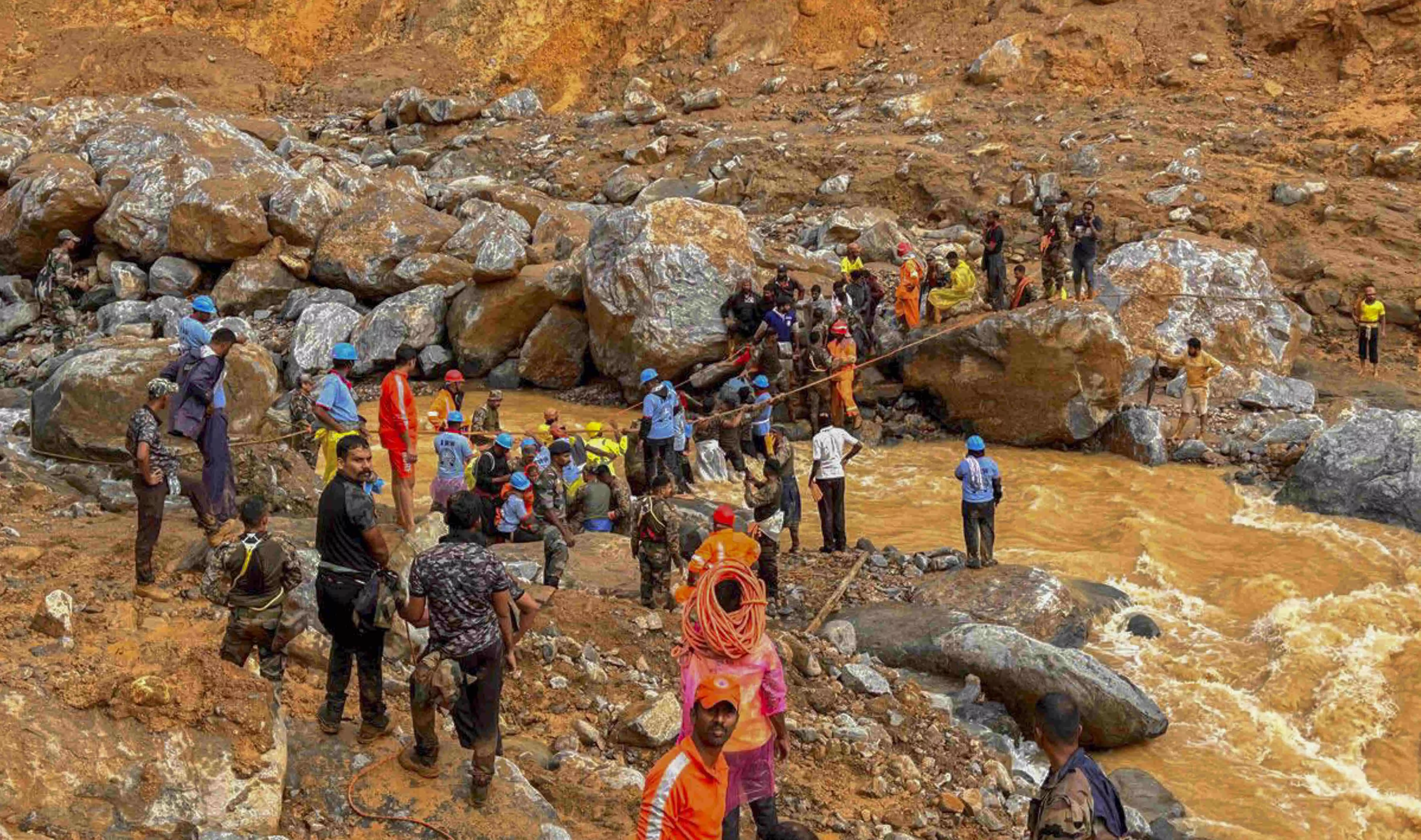Grim manifestations

The landslide in Kerala has flattened certain villages—killing more than 150 people. The number of fatalities is likely to go up in the coming days. This is the worst natural disaster the state has witnessed since the 2019 floods that killed over 400 people.
Landslide is a mass movement of material, such as rock, earth or debris, down a slope. It can either be swift and sudden or occur over a long period of time. The sudden landslides are highly destructive and result as a consequence of weakening of forces holding the soil and rocks intact along a slope. In the case of Wayanad landslides, heavy rainfalls are speculated to be the primary causal factors. The rain water seeps through the surface and neutralises the binding forces. Several districts, including Wayanad, have witnessed extremely heavy rainfalls over the last couple of weeks—leading to saturation of the soil. In the last two days leading up to the landslide, the state witnessed a staggering 572 mm of rain. News reports suggest that there was formation of very deep clouds before the landslides.
While all these seem to be natural factors beyond the control of humans, reality may not be as discrete. The Anthropocene has so intricately intermingled with climate that it is difficult to segregate one from the other. Experts suggest that the southeast Arabian Sea is becoming increasingly warm, resulting in atmospheric instability and the formation of deep cloud systems that precipitate heavy rainfall over Kerala. The formation of deep cloud systems due to the warming sea is a clear indicator of climate change. This phenomenon, which was once confined to the northern Konkan belt, has now extended southward, bringing with it unprecedented rainfall and the attendant risk of landslides.
Ecologist Madhav Gadgil, who chaired the Western Ghats Ecology Expert Panel (WGEEP)—popularly known as Gadgil Committee—in 2013, has lashed out at the government for not heeding to the warnings flagged by his panel. The WGEEP had classified the region into three levels of ecological sensitivity. Notably, the areas affected presently were marked as highly sensitive. The panel had recommended categorisation of these areas as ‘no-development’ zones. The recommendations of the Gadgil Committee were dubbed as impractical by many. Subsequently, the government formed the Kasturirangan Committee in 2012, which recommended milder restrictions that the Kerala government adopted.
In the wake of the frequent and intensified natural disasters in the region, the state must endeavour to relook at its priorities. Climate change is a fast-evolving phenomenon, requiring newer restraints with the passage of time. This holds particularly true for ecologically sensitive regions. The landslide atlas released by the Indian Space Research Organisation’s (ISRO) National Remote Sensing Centre last year revealed that 10 out of the 30 most landslide-prone districts in India were in Kerala—with Wayanad ranked 13th. In addition, the Western Ghats is a highly populated region with significant household density—meaning that any natural disaster will affect a large number of people.
It is very important that development activities—including construction of dams and mining—be reasonably restricted in the region which is one of the eight ‘hottest hotspots’ of biological diversity in the world. The loss of tree cover and natural vegetation is also a crucial factor exacerbating the possibilities of landslides. In the era of alarmingly changing climate, the Kerala government needs to develop a new outlook that prioritises ecology over development. Afterall, every single disaster rolls back the process of development by a huge margin.



